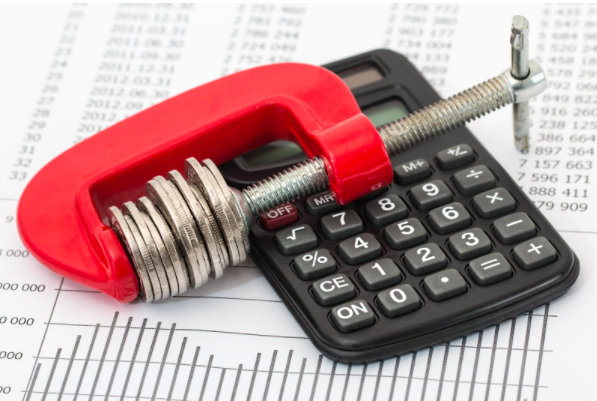Tech
Experts Share 5 Essential Tips For Data Center Construction

From the advent of the earliest computer networks to the birth of the internet, and through to today; data centers are the very backbone of everything we do online. From e-mail to cloud storage, social media, video streaming, and online gaming, we rely on a robust network of data centres to get nearly anything done on the World Wide Web.
This is what makes proper data center planning and deployment so important. As a booming business, the global data construction market was valued at US$ 18.56 billion in 2018. It’s projected to expand to US$ 30.00 billion by 2024. As consumer confidence in cloud-based systems grows, so does the industry of data center construction.
Let’s have a quick look at some essential steps to remember when planning your data center.
Define Clear Goals

The first and most crucial step is to consult with the parties involved and get a clear roadmap of what they plan to host through their data center and lay out a smooth, scaleable path toward that target. On the subject of scalability, always do your research, from the upgradability of systems to the power overheads on redundant power supply solutions. Many companies are serious about maintaining a minimal impact on the environment. They also want a long-term cost-saving plan in place, so keep this in mind when meeting with them.
Invest in a Great Partnership
Setting up a data center is very seldom a one-person operation. Meet with potential contractors and industry peers to find the best team of infrastructure engineers. This would also be an excellent time to appoint a project manager, should you not have one on staff.
Design the Data Center Environment
This is probably the most obvious step, and also the one most people rush to complete. This is the best opportunity to assess the space available and learn more about how to optimize it from energy efficiency to lighting and cable management.
Keep in mind that this is the phase where you offer your clients a tangible representation of what their investment is securing for them. Try to provide an upgrade roadmap and do your best to make every expense seem justifiable, rather than merely luxurious.
Go Over the Finer Details of Your Plan
Here you’ll move over from the broader perspective of your strategy into a detailed project roadmap. From here, you’ll establish the project milestones and develop the essential testing procedures.
Allocate Your Resources Effectively

This is an area where a project manager comes into their own. Have regular meetings with your vendors and partners to determine each party’s roles and responsibilities along each of your project milestones.
Conclusion
Near the end of a project, it’ll be time to bring up the new environment, troubleshoot any potential issues, and address key performance indicators.
After that, it’s appreciated if you can give some key metrics and insights on the performance of your system. Explain how your customer’s investment and patience during a transitional phase have paid off in the end.
As long as you use these tips and techniques, you’ll have no problems when constructing your data center.
Tech
The Importance of Cyber Hygiene: Tips from HelpRansomware Experts

Byline: Katreen David
In the digital age, the adage “an ounce of prevention is worth a pound of cure” has never been more relevant.
For Juan Ricardo Palacio and Andrea Baggio of HelpRansomware, the battle against digital threats is a daily reality. Founded in response to the growing menace of ransomware, HelpRansomware has made it its mission to recover data while educating the public on the importance of cyber hygiene.
“Preventing a cyberattack before it happens is crucial. We can safeguard digital assets more effectively by nipping the threat in the bud through vigilant monitoring and proactive measures,” says Baggio.
The Growing Threat of Cybercrime
Cyber threats have become increasingly pervasive and sophisticated, impacting businesses and individuals alike. According to research, there are an estimated 2,000 cyberattacks per day globally. This equates to over 800,000 cyber crimes annually. In line with this, the worldwide cost of cybercrime is projected to reach the $23 trillion mark by 2027.
This alarming figure highlights the critical need for robust cybersecurity practices. HelpRansomware has responded to this challenge by accentuating the importance of preventive measures. “Our goal is to create a safer digital environment where cyber hygiene is as natural as brushing your teeth,” says Palacio.
Cyber Clean: Maintaining Digital Hygiene
HelpRansomware advocates for a proactive outlook on cybersecurity. It offers practical tips for maintaining good cyber hygiene, such as regularly updating software, using strong and unique passwords, developing risk management plans, and educating employees about phishing scams.
“Cyber hygiene is about taking small, consistent actions to protect your digital assets,” explains Palacio. “When we practice good cyber hygiene, the chances of cyber attacks occurring shrink significantly.”
Businesses can significantly reduce cyberattack vulnerability by integrating these practices into daily routines.
HelpRansomware’s Role in Promoting Cyber Hygiene
Beyond recovery services, HelpRansomware is dedicated to raising awareness and providing education on cybersecurity best practices. It conducts workshops and seminars to help organizations understand the importance of cyber hygiene. This unique initiative mirrors the company’s sincere efforts toward shielding the world from the dark side of the web.
“Education is the first line of defense against cyber threats,” emphasizes Baggio. “Francis Bacon’s famous quote will always ring true in every industry: ‘Knowledge is power’.”
HelpRansomware’s efforts are power moves across the board that help businesses recover from attacks. Its checkmate move, however, is its vision to build a culture of prevention that can safeguard against future threats.
In an era where cyber threats lurk around every unlikely corner of the internet, the importance of cyber hygiene cannot be overstated. Through its innovative solutions and educational initiatives, HelpRansomware is leading the pack in promoting better cybersecurity practices. “We believe that a well-informed and vigilant community can defeat cybercrime,” concludes Baggio.
HelpRansomware’s proactive stance on cyber hygiene is setting new standards in the industry. Through education and preventive practices, Andrea Baggio and Juan Ricardo Palacio are fortifying the digital community, making sure that future cyber threats are met with informed and resilient defenses. Cleanliness matters in both the tangible and digital world.
-

 Tech4 years ago
Tech4 years agoEffuel Reviews (2021) – Effuel ECO OBD2 Saves Fuel, and Reduce Gas Cost? Effuel Customer Reviews
-

 Tech6 years ago
Tech6 years agoBosch Power Tools India Launches ‘Cordless Matlab Bosch’ Campaign to Demonstrate the Power of Cordless
-

 Lifestyle6 years ago
Lifestyle6 years agoCatholic Cases App brings Church’s Moral Teachings to Androids and iPhones
-

 Lifestyle4 years ago
Lifestyle4 years agoEast Side Hype x Billionaire Boys Club. Hottest New Streetwear Releases in Utah.
-

 Tech7 years ago
Tech7 years agoCloud Buyers & Investors to Profit in the Future
-

 Lifestyle5 years ago
Lifestyle5 years agoThe Midas of Cosmetic Dermatology: Dr. Simon Ourian
-

 Health6 years ago
Health6 years agoCBDistillery Review: Is it a scam?
-

 Entertainment6 years ago
Entertainment6 years agoAvengers Endgame now Available on 123Movies for Download & Streaming for Free
